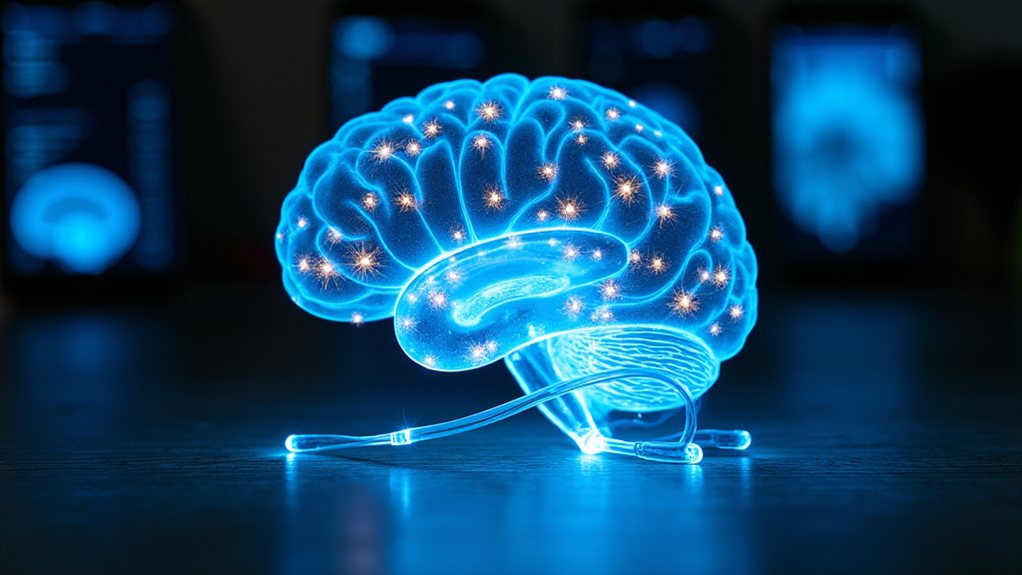AI in K-12 math presents a classic “yes, but…” scenario. On one hand, tools like Gradescope slash grading time by 70%, and Ivy Tech’s program helped 98% of struggling students excel. On the other hand, 70% of math teachers lack AI training, creating a digital divide that’s about as fair as a rigged game show. The math classroom is evolving into a computational lab where understanding AI’s reasoning becomes as essential as solving for x.
While teachers have been grading stacks of math worksheets by hand for generations, a quiet revolution is transforming classrooms across America. AI tools have infiltrated 25% of classrooms nationwide, with math teachers leading the charge toward a digital educational future. Think fewer paper cuts, more algorithms.
Suburban schools are outpacing their urban and rural counterparts in the AI adoption race—21% versus 17% and 16% respectively. It’s like the tech version of “keeping up with the Joneses,” but with smart tutoring systems instead of fancy lawn ornaments.
The suburban tech arms race continues—now with AI tutors instead of manicured lawns.
The results? Pretty impressive, actually. Ivy Tech’s AI intervention program saved 3,000 at-risk students, with 98% earning a C or better. That’s a higher success rate than most Netflix shows get for second seasons.
Adaptive learning systems are personalizing education at a scale that would make even the most dedicated teacher’s head spin. These systems provide real-time adjustments to content based on each student’s performance, creating truly individualized learning experiences.
But hold up—35% of educators report that AI has had zero impact on achievement. Talk about a digital divide. While some students solve equations with AI assistants whispering in their ears, others are stuck with the same dusty textbooks their parents used.
The efficiency gains are undeniable, though. AI grading tools like Gradescope slash marking time by 70%. Teachers can finally reclaim their Sunday afternoons!
Meanwhile, smart systems quietly identify struggling students, suggest interventions, and generate tailored practice problems faster than you can say “polynomial function.”
The million-dollar question remains: Will students still learn to think mathematically when AI can solve problems for them?
Educators argue that foundational skills remain vital—after all, you can’t debug an AI’s faulty reasoning if you don’t understand the math yourself.
As AI literacy becomes as essential as multiplication tables, math classrooms are evolving into laboratories where students learn both computation and critical thinking.
Despite the potential benefits, research shows that only 20% of math teachers use AI tools for instruction, significantly fewer than their counterparts in ELA and science.
The goal isn’t just getting the right answer—it’s knowing when the machine gets it wrong.
A significant obstacle to wider adoption is that 70% of math educators have not received any professional development on how to effectively integrate AI into their instruction.









